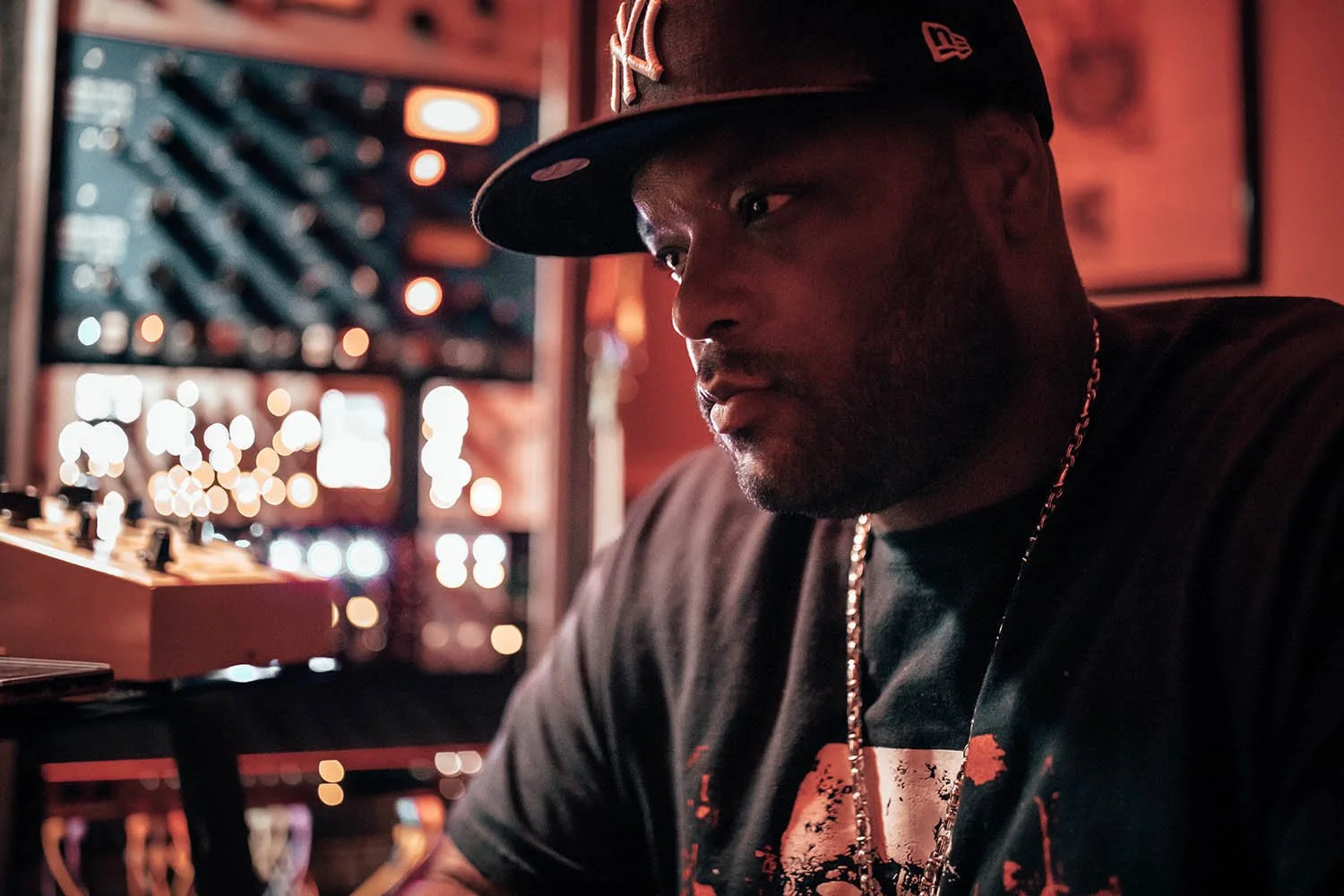MASTERING GRAMMY-AWARD WINNING ALBUMS - DARCY PROPER
How Darcy Proper uses Dangerous Music gear in her mastering chain to achieve her signature sound across genres and generations of music.
By Brooke Bilyj
When Darcy Proper became the first female audio engineer to win a GRAMMY for Best Surround Sound Album for Donald Fagen’s “Morph the Cat” in 2008, she was living on the other side of the globe, working at Galaxy Studios in Belgium. It was during this same era of her engineering career when she first discovered Dangerous Music. Since then, practically every project she’s mastered has touched some sort of Dangerous equipment.
“It’s safe to say that virtually anything I’ve worked on in the last several years ran through one piece of Dangerous gear or another,” she says. “It’s funny to think that I wasn’t working on Dangerous gear before then. It sort of feels like it’s been in my mastering chain forever.”
Now, with four GRAMMY Awards and 12 nominations to her name, Proper has built a reputation around her dynamically spacious sound and her ear for detail. Whether she’s mastering historical reissues for iconic artists like Billie Holiday, Louis Armstrong, and Frank Sinatra, or immersive stereo releases for artists like Steely Dan and The Eagles, Proper relies on the best quality equipment to control the sonic imagery of her work.
Here’s how she uses Dangerous in her mastering chain to achieve her signature sound across genres and generations of music.
Proper Control
The first piece of Dangerous gear that Proper discovered in Belgium was the Dangerous S&M, (now incorporated in the Dangerous MASTER) an analog sum and difference (mid-side) processor that separates tracks into center and side signals to provide unprecedented stereo control.
“I was looking for a device that would allow me to work in mid/side mode with some of my classic tools,” says Proper, who worked as a quality control engineer at Sony Classical Studios early in her engineering career. “I ended up using it a lot—and still do—for stereo widening or pulling the center forward. I use it on probably 90% of my projects as a way of controlling the balance between the sides and mid signal to give the effect of more space.”
The Dangerous S&M is one of the first steps in Proper’s mastering chain today, enabling her to alter the width and space of stereo fields before adding any EQ.
“Adding a little more of the side signal sometimes gives the impression of having a bit of high frequency. It makes it feel more spacious without causing issues with mono-compatibility and without having to resort to actual EQ,” she says. “I find that I use the S&M quite often if something is on the edge of being a little bit bright and needs some opening up. It keeps it very natural.”
Built on BAX
After the S&M, Proper tends to be “an EQ-before-compression kind of person.” She has four Dangerous BAX EQs set up on all eight channels of her high-profile 7.1 surround sound master, so she can make subtle adjustments across the frequency spectrum.
“I’m using the BAX EQ for a bit of tidying up in the very top or bottom end with the high-pass and low-pass cut filters, and then setting broad strokes with the high and low tilts,” she says. “Having that high-pass filter at the bottom end, even at 12 Hz, can clean up a lot of the energy that isn’t doing anything musically productive. The selection of frequencies on the BAX is great because you can find just the right spot to give a little boost and definition where you want it, and then get rid of the stuff below that that isn’t serving the music.”
Using the cut filters on the BAX, Proper dials out the unwanted frequencies that can muddy up tracks and kill headroom—unlocking louder, more dynamic mixes with her intricate tonal shaping. Best of all, she says, the filters are accurate and transparent and offer enough headroom that she doesn’t have to worry as much about distortion, as is often the case with other EQs.
“What the BAX is doing for me is replacing some of the things I used to do when I had a Sontec in my chain, but I don’t have to be quite as conservative with level. If I wasn’t extremely careful with level through the Sontec, it had a tendency to crack up pretty quickly. Even at moderate levels in the heavier sections of orchestral material like the Boston Pops, for example, the Sontec was tricky—but I’ve never had any of that diva behavior from the BAX. The adjustments I can make with it are very musical, and there isn’t any bizarre disconnect between what you do on the top or bottom end,” she says. “It all feels and sounds very organic.”
Nuanced Compression
After frequency equalization, Proper has a choice of four different compressors in her mastering chain. While some of these compressors are more specialized for particular “rock’n’roll” styles or attitudes, she turns to the Dangerous COMPRESSOR to achieve a wide range of subtle sounds in between.
“It’s a very versatile compressor,” she says. “Depending on how far you push it, it can either be quite transparent or it can be more of a heavy-hitter. I can use it to accomplish whatever it is that I’m looking for.”
Proper tends to work in fairly low ratios—generally around 1.7:1 or 2:1, up to 4:1 if she’s looking to hit a bit harder. Even without heavy compression, the Dangerous COMPRESSOR gives her material “more of a pulled together, solid feel,” she says. “It can be doing quite a lot and it doesn’t sound like it’s doing a lot, or it can be doing quite a little and you get a big impact from it.”
Direct Connection
While mixing engineers can sometimes get away with using a range of “fun but less-than-perfect” tools to create color and character on individual tracks, mastering engineers like Proper tend to be extra picky about maintaining fidelity in the signal chain.
“When we’re mastering, we’re basically strapping any tools that we use across the entire mix,” she says. “We have to be sure that the tools we’re using are very high quality, so they’re not introducing anything that’s detrimental to the music. What I really appreciate about the Dangerous tools is that they’re transparent in the sense that they’re not adding any of those unwanted side effects.”
With the BAX EQ, for example, Proper can make sweeping sonic adjustments across a mix without introducing any unwanted noise or artifacts. This type of audiophile-grade clarity is key to her crystal-clear stereo imaging.
“From my years of working in classical music, I have the philosophy that each tool you put in the chain has the potential to increase the distance between the artist and the listener,” she says. “I’m aiming to have as few tools in the chain as possible, while still having everything that’s necessary to enhance the sound, so the listener experiences the music and the artist’s message as intimately as possible.”
This direct connection is especially important when mastering iconic reissues of classics like original Broadway cast recordings or the iconic albums of Louis Armstrong, Billie Holiday, Frank Sinatra, Tony Bennett, and Dave Brubeck, for example.
“It’s always a bit daunting to work on these amazing historic reissues, because the standard was set a long time ago—and it was a high standard, otherwise, nobody would bother to reissue them,” says Proper… “Choosing the tools to take advantage of the improvements that have been made in audio engineering over the years, and still not put anything in the way to sully that standard, that’s always a daunting task. So, we have to rely on very high quality tools.”
Essential Equipment
The Dangerous equipment in Proper’s chain blends the sophisticated circuitry she expects, with the ease-of-use she requires—empowering her to focus on the sounds she’s creating, instead of worrying about the equipment settings.
“I play the tools in my mastering chain the same way that a musician plays his instrument,” she says. “A good pianist is not thinking about playing a C chord; they think about the sounds they want to make, and their hands just do it. I have the same kind of relationship with my gear. What I love about the intuitive layout of the Dangerous gear is that I no longer have to think about, ‘How am I going to get there?’ I just reach for it. I don’t have to be a rocket scientist to be able to operate it and get the results I’m looking for.”
That’s why Dangerous has been a mainstay in Proper’s chain since she first plugged the gear into her chain. After leaving Galaxy Studios in 2011, Proper and her husband—renowned Dutch recording and mixing engineer, Ronald Prent—moved to Holland to rebuild the legendary Wisseloord Studios, using several pieces of Dangerous equipment. More recently, they returned to Proper’s home state of New York to join Valhalla Studios New York, which was just transitioning into a commercial facility after being used exclusively by engineer/producer/owner Joey DeMaio and the artists on his label Magic Circle Entertainment since 1999. Arriving back in the U.S. just months before COVID-19 shut down the country, Proper and Valhalla Studios New York had to be very selective of the gear they chose for the new studio.
“Having COVID hit just as we were trying to open this studio has made us very conscious about where our money is spent,” she says. “Every tool has to be a real workhorse—not just something that’s going to be used in highly specialized cases, but something that we can really get some mileage out of. We’ve looked long and hard at every piece of gear we’ve chosen to incorporate into the setup here. That’s why so many Dangerous tools ended up here, because we feel that these are essential tools that we will get good use out of for years to come.”





